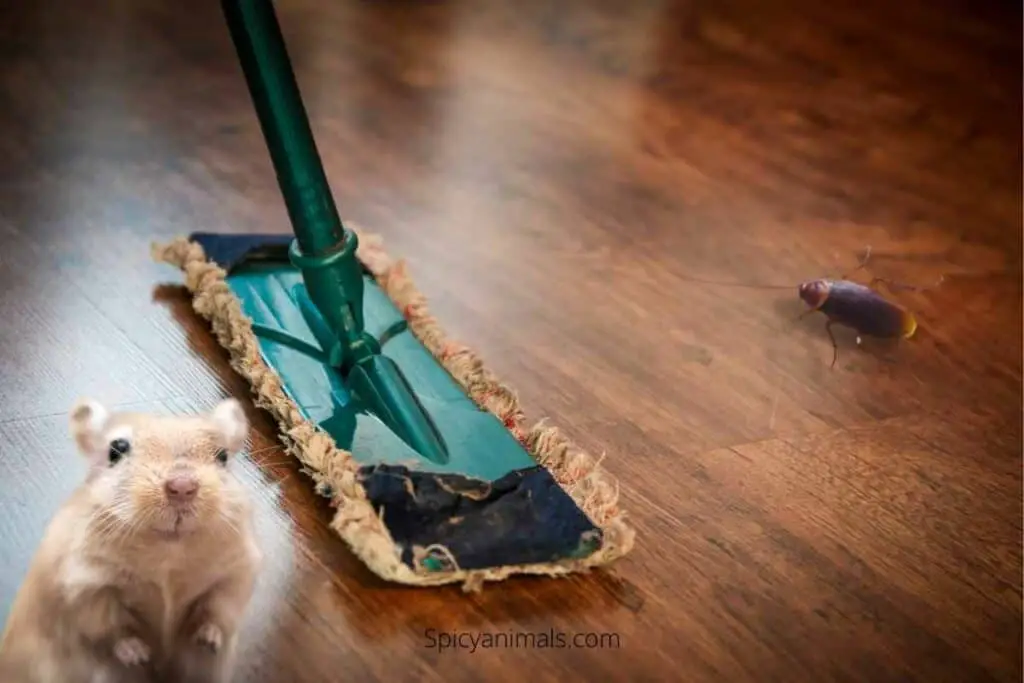If you’re pressed for time, here’s the summary: Rats, gerbils, and guinea pigs are frequently considered the most affectionate rodent pets that form strong bonds with their owners. However, don’t overlook chinchillas and degus, as they also offer moments of affection and cuddliness!
Why Affection Matters:
- Companionship: We all know that pets provide companionship, but some pets form a strong bond with their owners more than others.
- Ease of Care: An affectionate pet is often easier to care for. They’re less likely to be frightened and more likely to be docile.
- Emotional Benefits: When a pet shows affection, it’s not just them benefiting. Oxytocin is released in humans too, making us feel all warm and fuzzy inside.
Hello, fellow animal lovers! 🐾 If you’re on the hunt for a pet rodent that’s not just cute but also super affectionate, you’ve come to the right place. Let’s dive into the world of cuddly critters and find out which ones will happily sit on your lap for some quality cuddle time.
Table of Contents
Types of Rodents Kept as Pets
- Rats: Often misunderstood, rats make excellent pets. They’re social creatures and enjoy being held. Forget the stereotype of rats as vermin; these guys are clean and smart.
- Gerbils: Native to the Mongolian deserts, gerbils are also very social and live in large groups in the wild. They’re energetic but can be tamed to enjoy a good tickle or stroke.
- Guinea Pigs: These are among the cuddliest rodent species. They have a placid temperament and love to spend time sitting on their owner’s lap.
- Chinchillas: Known for their luxurious fur, chinchillas are naturally more wary of humans but can form a strong bond with time and patience.
- Degus: These are like a cross between gerbils and rats. They’re social and curious about humans, but they may never sit still for long cuddles.
- Hamsters: These are common rodent pets, but hamsters are often compared to gerbils and found to be less social. They’re more of a look-don’t-touch kind of pet.
- Mice: Tiny but adorable, mice don’t naturally crave physical contact but can become more confident around humans with proper socialization.
What’s Coming Up
We’ll delve into the pros and cons of each of these rodent species, explore how to domesticate them for maximum cuddliness, and even touch on some lesser-known types that are also kept as pets. Whether you’re a first-time rodent owner or looking to add another furry friend to your family, this guide has got you covered.
So, stick around as we answer all your burning questions, like which rodents like to be held, which ones allow you to cuddle, and which are the friendliest of the bunch. Trust us, By the end of this guide, you’ll be a rodent whisperer!
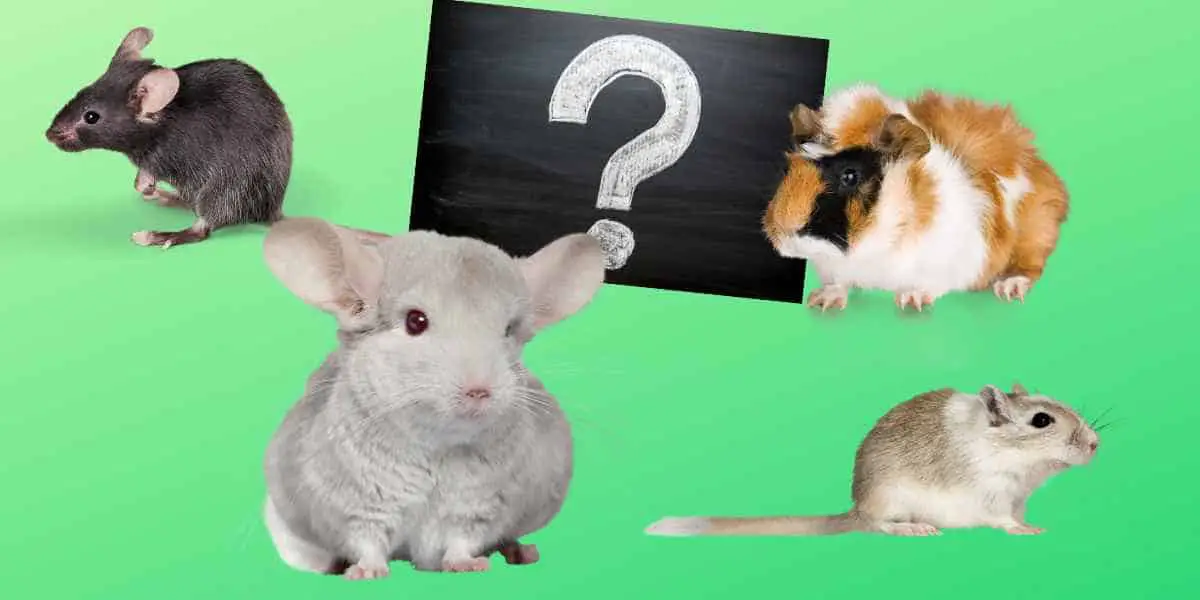
The Most Affectionate Rodent Species
Welcome back! Now that we’ve set the stage, let’s get into the nitty-gritty. Which rodent species are the most affectionate, and what makes them so lovable? Let’s find out!
Rats: The Social Butterflies
- Social Nature: Rats are incredibly social creatures that form strong bonds with their human owners.
- Intelligence: They’re smart enough to learn tricks and even respond to their names.
- Misconceptions: Rats can grow as big as cats. This is a common misconception [1]
- Cuddle Factor: Rats enjoy being held and will often sit on their owner’s shoulders, making them an excellent choice for a cuddly pet.
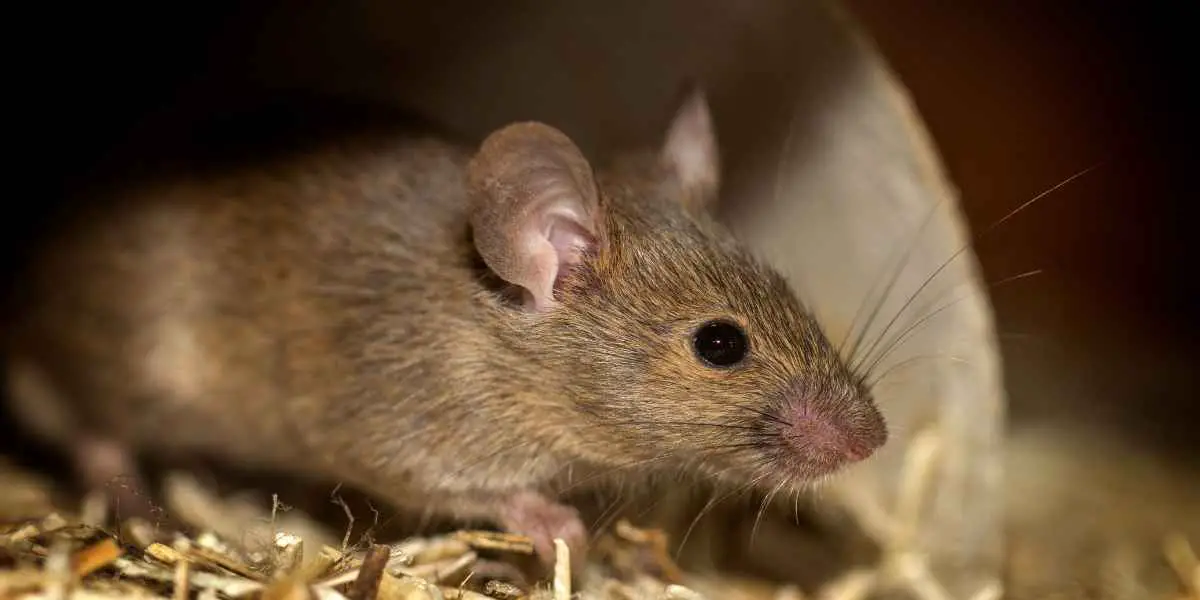
Gerbils: The Energetic Explorers
- Natural Habitat: Gerbils are native to the Mongolian desert and are naturally energetic.
- Social Bonds: Unlike hamsters, gerbils are social and live in groups in the wild.
- Playfulness: They love to explore and may enjoy a tickle or stroke from their owners.
- Affection Level: While they’re energetic, they can be tamed to show affection and even enjoy being held.
Guinea Pigs: The Cuddle Champions
- Temperament: Guinea pigs have a placid temperament and are generally very docile.
- Vocal Affection: These little guys are known for their vocalizations, a sign they’re affectionate towards their owners.
- Cuddle Time: If you’re looking for the cuddliest rodent, a guinea pig might just be your best bet.
- Social Needs: They live in large groups in the wild, so consider getting more than one to keep each other company.
Chinchillas: The Soft and Shy Ones
- Luxurious Fur: Chinchillas are known for their incredibly soft fur, which makes them tempting to cuddle.
- Natural Behavior: They’re naturally more wary of humans but can become confident around their owners with time.
- Night Owls: Keep in mind that they’re nocturnal, meaning they sleep during the day and are active at night.
- Affection Signs: A chinchilla that allows you to stroke its fur or sit in your lap is showing that it has formed a strong bond with you.
Degus: The Balanced Buddies
- Unique Traits: After becoming familiar with your routine, these adorable beings will eagerly approach you, seeking to engage in playtime or receive affectionate belly rubs. Their desire for social interaction and physical activity is strong.
- Curiosity: They’re curious about humans but may never sit still for long cuddles.
- Social Interaction: Like rats and gerbils, degus also enjoy the company of their own kind.
- Affection Indicators: If a degu allows you to stroke it or sits calmly in your hand, it’s a sign of affection.
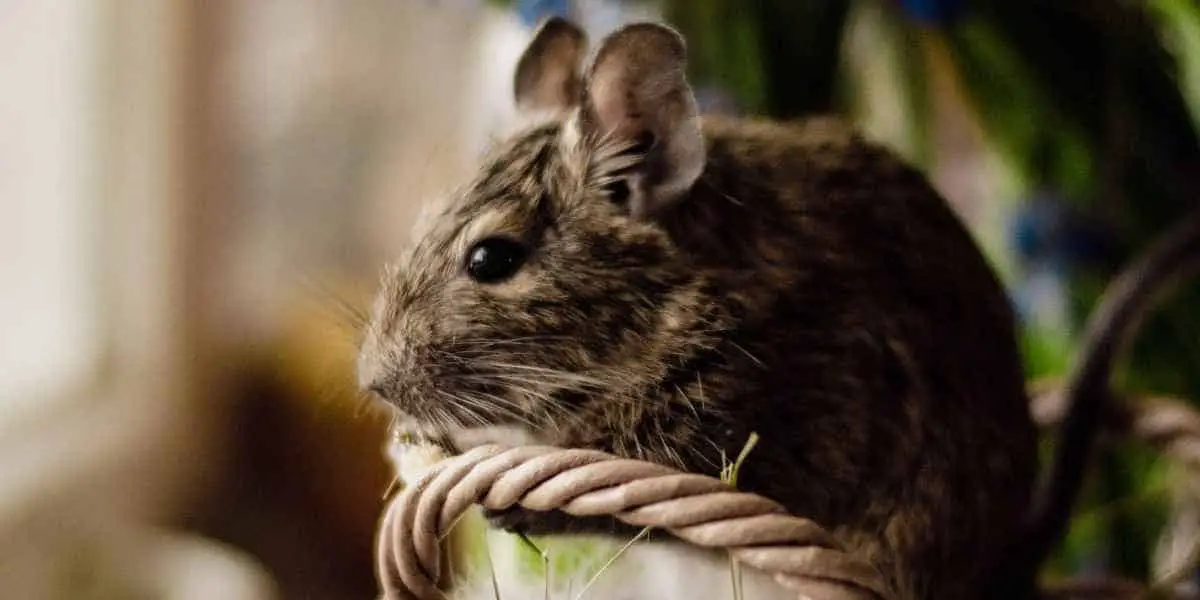
Hamsters: The Independent Introverts
- Commonality: Hamsters are one of the most common rodent pets.
- Solitude: Unlike gerbils, hamsters are often compared to gerbils but are generally less social.
- Cage Considerations: A single-hamster cage isn’t recommended; they like their space.
- Affection Limits: They’re more of a look-but-don’t-touch kind of pet, but some may grow to enjoy being held.
Mice: The Tiny Observers
- Size: Mice are small and can look quite adorable, but they’re generally not as cuddly as some other rodents.
- Socialization: With proper care and attention, they can become more confident around humans.
- Affection Level: While they may not seek out cuddles, a mouse that doesn’t ‘freeze’ when you approach is showing some level of comfort and trust.
From the friendliest to the most independent, each of these rodent species has its own unique way of showing affection. Up next, we’ll talk about the factors that influence how affectionate a rodent can be. Stay tuned! 🐭🐹🐰

Factors Influencing Rodent Affection
Now that we’ve explored the most affectionate rodent species, let’s dig into the factors that influence how cuddly and loving these little critters can be. Trust me, you’ll see that it’s not just about the species; there’s more to it!
The Role of Domestication
- Domesticated Rodents: Not all rodents are created equal. Some species have been domesticated for years, making them more affectionate towards humans.
- Wild vs. Domestic: If you’re looking for a pet that bonds with others, including humans, stick to domesticated rodents.
Where to Get Your Pet: Pet Store vs. Breeder
- Pet Store: Convenient but not always the best option for socialized pets.
- Breeder: Often, breeders offer rodents that have been socialized and show a friendly temperament from a young age.
- Adoption: Don’t rule out adoption; many loving rodents are looking for a second home and make good pets.
Enclosure and Environment
- Space Matters: The size of the enclosure can affect your rodent’s happiness. A cramped cage isn’t recommended.
- Enrichment: Toys, tunnels, and climbing structures can help build confidence around humans.
Understanding Rodent Body Language
- ‘Freeze’ Behavior: If your rodent freezes, it’s often a sign of fear, common in prey animals.
- Relaxed Body: A relaxed pet’s body language is a good indicator that it feels safe and may even show that it loves you.
- Vocalizations: Listen to your guinea pig’s or chinchilla’s sounds; they can indicate comfort or distress.
Temperament and Personality
- Individual Differences: Even within one species, temperaments can vary. Some may never enjoy being held, while others can’t get enough love towards their owners.
- Age Factor: Younger rodents are generally more energetic and less likely to sit still for cuddles.
Common Concerns and Misconceptions
- Size: Don’t be fooled by size; even rodents that are just a few inches long can pack a lot of love.
- Social Needs: Some rodents, like chinchillas, love the company of their own kind. That’s why they’re often happier in pairs or groups.
Understanding these factors can help you choose a rodent that not only fits your lifestyle but also becomes a loving member of your family.
How to Build a Strong Bond with Your Rodent
Now that you’ve got the lowdown on which rodents are more affectionate towards humans and the factors that influence their behavior, let’s talk about how to build that all-important bond with your new friend
Choosing the Right Breed for Bonding
- Breed Matters: You may wonder why some rodents seem to bond more easily than others. The breed can play a significant role in how quickly a rodent warms up to you.
The Importance of the First Few Weeks
- Initial Interaction: The first few weeks are crucial for setting the tone of your relationship. This is the time to establish trust and show your pet that you’re a friend, not a foe.
Proper Housing: More Than Just a Cage
- Space to Roam: A cramped cage isn’t recommended. Your rodent needs space to explore, play, and retreat when they don’t like something.
- Safety First: Make sure the enclosure is escape-proof and safe from any household dangers.
Building Trust Through Interaction
- Consistent Handling: Regular, gentle handling can go a long way in building trust.
- Treats and Rewards: Positive reinforcement with treats can make your rodent more eager to interact with you.
Signs Your Rodent is Bonding With You
- Curiosity: A rodent that is curious about you and your activities is likely starting to feel comfortable.
- Comes When Called: Some rodents can even learn to come when called, a sure sign of a strong bond.
What to Avoid
- Forced Interaction: Never force your rodent to interact with you; this can break any trust you’ve built.
- Ignoring Signs of Stress: If your rodent is showing signs of stress, give them space. Forcing the issue can lead to a setback in your bonding journey.
Common Misconceptions About Rodent Affection
Let’s debunk some myths and misconceptions about rodent admiration. Trust me, some of these might surprise you!
Myth 1: All Rodents are Naturally Affectionate
- The Truth: Just like people, rodents have individual personalities. Some may be naturally cuddly, while others may take time to warm up to you.
Myth 2: Rodents from Pet Stores are Always Socialized
- Reality Check: Unfortunately, this isn’t always the case. Rodents from pet stores may not have been handled as much, making them less social initially.
Myth 3: Rodents Don’t Need Much Space
- The Facts: Contrary to popular belief, a small cage isn’t sufficient. Rodents need space to explore, hide, and play. A cramped environment can lead to stress, which isn’t conducive to building a loving relationship.
Myth 4: Rodents are Just Small Pets and Easy to Care For
- The Truth: While they may be small in size, rodents require a lot of care and attention to keep them happy and healthy. This includes a proper diet, clean living conditions, and regular social interaction.
Myth 5: Rodents are Dirty and Carry Diseases
- Reality Check: Domesticated rodents are clean animals that groom themselves regularly. With proper care, the risk of disease is minimal.
Myth 6: You Can’t Train a Rodent
- The Facts: Rodents are intelligent creatures that can be trained to do various tasks and tricks. Training can also be a great way to bond with your pet.
Myth 7: Rodents are Good “Starter Pets” for Kids
- The Truth: While rodents can make wonderful pets for families, they are not merely “starter pets.” They require a commitment to their well-being and should not be considered less important than larger pets.
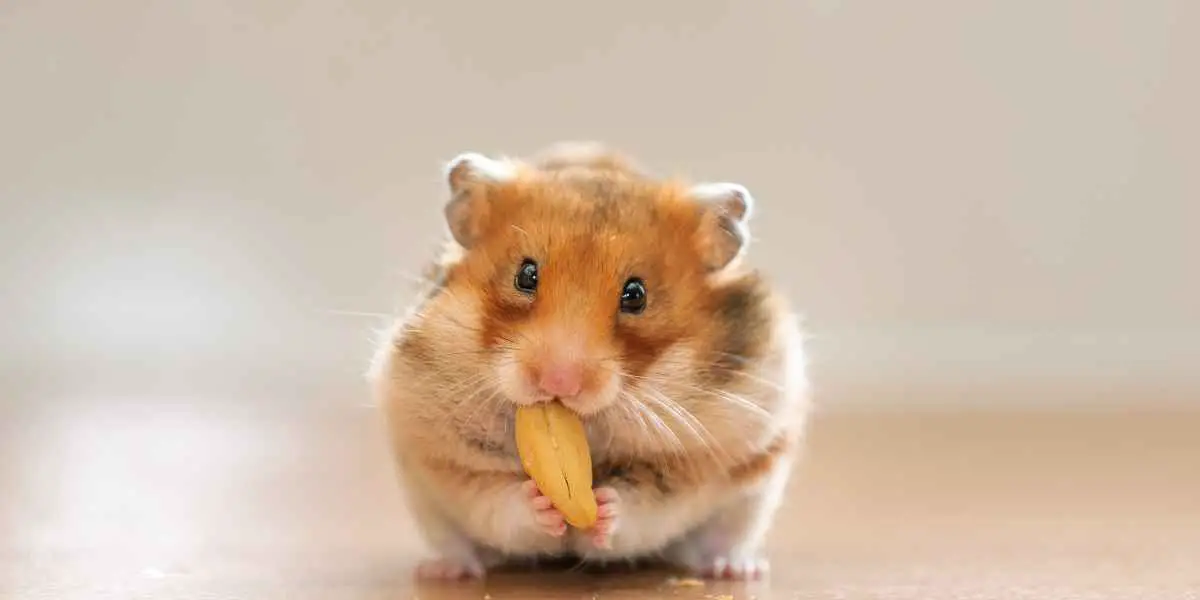
The Science Behind Rodent Affection
The Role of Genetics
- Inherited Traits: Believe it or not, some rodents are genetically predisposed to be more affectionate. Selective breeding over generations can result in rodents that are more social and loving.
Neurochemistry of Bonding
- Oxytocin: Often referred to as the “love hormone,” oxytocin plays a significant role in bonding, not just in humans but in rodents too. When a rodent feels safe and loved, oxytocin is released, reinforcing the bond between pet and owner.
Socialization and Early Life Experiences
- Critical Periods: Rodents have critical periods in their early life where socialization can significantly impact their future behavior. Positive interactions during this time can make a rodent more affectionate in the long run.
Environmental Factors
- Stress-Free Zone: A stress-free environment is crucial for any pet to show affection. Factors like the size of the enclosure, cleanliness, and even the amount of light can impact a rodent’s mood and behavior.
Learned Behavior
- Positive Reinforcement: Rodents can learn to associate certain behaviors, like cuddling or sitting on your lap, with positive experiences like treats or gentle petting.
The Impact of Human Interaction
- Quality Time: The more quality time you spend with your pet, the more likely they are to become affectionate. It’s not just about the quantity of time but the quality of interactions you have.
Hormonal Changes
- Life Stages: Just like humans, rodents go through different life stages where hormonal changes can affect their behavior. For example, adolescent rodents may go through a “rebellious” phase before becoming more docile and affectionate as adults.
Interpreting Your Rodent’s Behavior
Now that we’ve delved into the science behind rodent affection, let’s talk about how to interpret your rodent’s behavior. Understanding these cues can help you better connect with your friend and meet their needs more effectively.
Body Language Cues
- Ears: If your rodent’s ears are perked up, they’re likely alert and interested. Flattened ears can indicate fear or aggression.
- Tail: A wagging tail in some rodents like rats can indicate excitement or happiness.
- Whiskers: Forward-facing whiskers usually mean your rodent is curious or excited, while whiskers pulled back can indicate fear.
Vocalizations
- Chirps and Whistles: These are generally positive sounds that indicate your rodent is happy or excited.
- Hissing or Growling: These are warning signs that your rodent is scared or agitated.
Behavioral Signs
- Grooming: If your rodent starts grooming themselves while near you, it’s a good sign they feel safe.
- Nesting: Building a nest or burrowing can indicate that your rodent is comfortable in their environment.
- Exploration: A rodent that explores its environment is generally feeling secure and curious.
Interaction with You
- Climbing on You: This is usually a sign of trust and affection.
- Nudging or Pawing: Your rodent might nudge or paw at you to get your attention, which is a sign they want to interact.
- Avoidance: If your rodent avoids you or runs away, they might be feeling scared or stressed.
Changes in Routine
- Eating Habits: A change in eating habits can be a sign of stress or illness.
- Activity Levels: A sudden decrease in activity could indicate that something is wrong, and you should consult a vet.
Signs of Stress or Illness
- Overgrooming: Excessive grooming can be a sign of stress or skin issues.
- Hiding: If your rodent is hiding more than usual, it could be a sign they’re not feeling well.
Understanding your rodent’s behavior can provide valuable insights into their emotional state. It allows you to adjust your interactions to better suit their needs and deepen the bond you share.
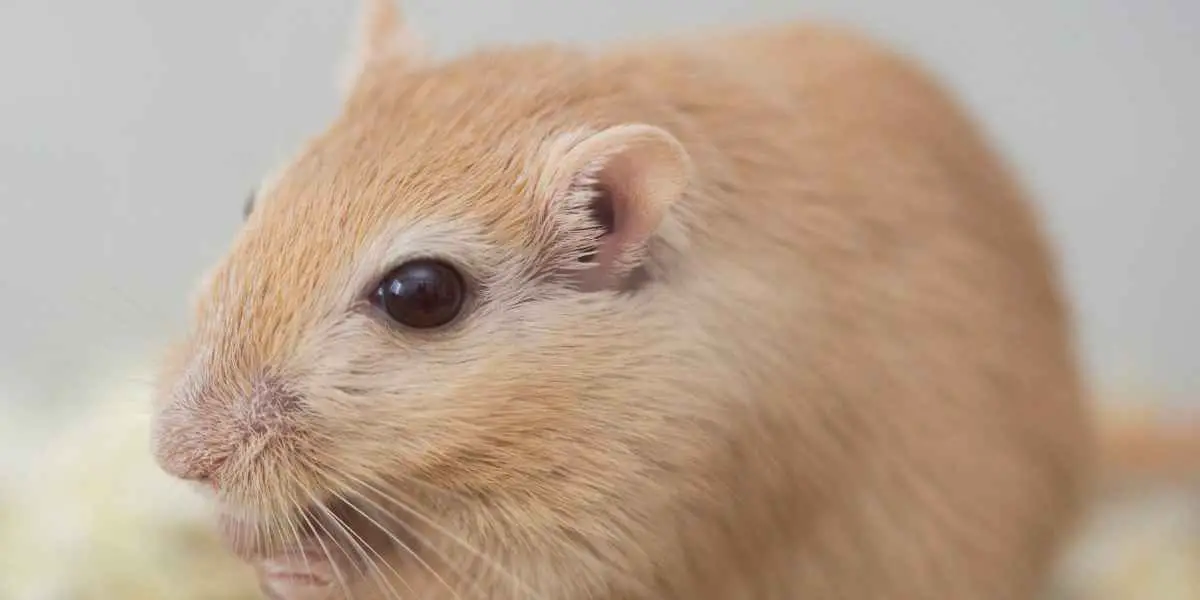
Fun and Interactive Ways to Spend Time with Your Rodent
By now, you’re practically a rodent behaviorist, right? So, let’s switch gears and talk about something a bit more fun—how to spend quality time with your friend. Trust me, it’s not just about cuddles; there are plenty of interactive activities to keep both you and your pet entertained.
Playtime Activities
- Maze Running: Create a simple maze using cardboard and let your rodent navigate through it. It’s a great mental exercise for them.
- Treat Search: Hide some treats around their enclosure and watch them sniff them out. It’s like a treasure hunt for rodents!
- Ball Play: Some rodents enjoy pushing a small ball around. Just make sure the ball is an appropriate size for your pet.
Training and Tricks
- High-Five: Believe it or not, you can train some rodents to give you a high-five. Use treats as positive reinforcement.
- Obstacle Course: Set up a mini obstacle course using safe household items and guide your rodent through it.
- Name Recognition: With consistent training, some rodents can learn to come when called by their name.
Cuddle Time
- Lap Sitting: Some rodents enjoy sitting on your lap while you read or watch TV.
- Shoulder Riding: For the more adventurous types, letting your rodent sit on your shoulder can be a fun experience for both of you.
Outdoor Adventures
- Harness Training: With a proper harness, you can even take some rodents outside for a little fresh air. Just make sure it’s a safe and controlled environment.
- Picnic Time: Why not have a little picnic with your rodent? Bring some rodent-safe fruits and veggies and enjoy some time in the sun.
Creative Interaction
- Painting: Yes, you read that right! Some rodents can be trained to create art by walking on a canvas with non-toxic, washable paint on their paws.
- Music Time: Some rodents enjoy listening to music. Play some soft tunes and see how your pet reacts.
Sensory Experiences
- Textured Mats: Place different textured mats in their enclosure and watch them explore. It’s a great sensory experience for them.
- Scent Trails: Use safe, natural scents to create a scent trail for your rodent to follow. It’s like a mini-adventure in their own home.
Final Tips for Rodent Care and Affection
We’ve covered a lot of ground, haven’t we? From understanding which rodents are the most affectionate to decoding their behavior and even spending quality time with them. As we wrap up this comprehensive guide, let’s go over some final tips to ensure you and your rodent live happily ever after.
Health Check-ups
- Regular Vet Visits: Just like any other pet, rodents need regular check-ups to ensure they’re healthy and happy.
- Signs of Illness: Keep an eye out for any changes in behavior or eating habits, as these could be signs of underlying issues.
Diet and Nutrition
- Balanced Diet: Make sure your rodent is getting a balanced diet, rich in nutrients. Each species has its own dietary needs, so do your research.
- Treats: While treats are great for bonding and training, make sure they’re rodent-safe and given in moderation.
Cleanliness is Key
- Clean Cage: A clean environment is crucial for your rodent’s well-being. Make it a habit to clean their enclosure regularly.
- Grooming: Some rodents require regular grooming to keep their fur and skin healthy.
Social Needs
- Companionship: Many rodents are social animals that thrive in the company of their own kind. Consider getting a companion if it’s suitable for your species of rodent.
- Human Interaction: Don’t underestimate the power of human interaction. Spend quality time with your rodent to strengthen your bond.
Safety Precautions
- Escape-Proofing: Make sure the enclosure is secure to prevent any adventurous escapes.
- Household Hazards: Rodents are curious creatures. Make sure your home is rodent-proof to avoid any accidents.
Final Thoughts
- Patience and Love: Building a bond with your rodent takes time and patience. Show them love and respect, and you’ll have a loyal companion for life.
- Continuous Learning: The world of rodents is fascinating and ever-evolving. Keep learning and adapting to provide the best life for your furry friend.


